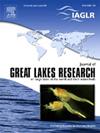流域模型预测覆盖作物对河流流量、沉积物迁移以及密歇根湖养分流失的影响
IF 2.4
3区 环境科学与生态学
Q3 ENVIRONMENTAL SCIENCES
引用次数: 0
摘要
最近的调查强调了减少非点营养负荷的必要性,以减轻五大湖地区有害藻华和缺氧条件的流行。本研究采用SWAT (Soil and Water Assessment Tool)对该模型在模拟St. Joseph River Basin (SJRB)水文、泥沙和养分动态方面的性能进行了综合评估。利用SWAT模型评价了种植冬季覆盖作物对流域内溶解养分和沉积物输出量的影响。我们通过改变在休耕期间种植WCC的行作物土地的比例来模拟不同的WCC情景。我们表明,虽然WCC对水流的影响很小,但它们大大减少了总悬浮固体(TSS)损失高达30%,证明了它们在土壤侵蚀控制方面的有效性。相比之下,WCC对减少溶解活性磷(DRP)和硝态氮(NO3-N)损失的影响是不同的,对NO3-N损失的影响大于对DRP的影响,导致DRP减少4%,NO3-N损失减少12%。本研究强调了SWAT模型在评估流域流量、养分和沉积物动态方面的多功能性,为改善大湖区农业流域水质的保护和管理干预措施的量化和相互比较提供了有价值的见解。本文章由计算机程序翻译,如有差异,请以英文原文为准。
A watershed model predicts the effects of cover crops on river flows, sediment transport, and nutrient loss to Lake Michigan
Recent investigations highlight the imperative of diminishing nonpoint nutrient loading to mitigate the prevalence of harmful algal blooms and hypoxic conditions in the Great Lakes region. This study employs the Soil and Water Assessment Tool (SWAT) to conduct a comprehensive assessment of the model’s performance in simulating hydrology, sediment, and nutrient dynamics at the St. Joseph River Basin (SJRB). We used the SWAT model to evaluate the effectiveness of the planting of winter cover crops (WCC) on the magnitude and dynamics of dissolved nutrient and sediment export within the basin. We modeled different WCC scenarios by varying the fraction of the row-crop land to which WCC were planted during the fallow period. We show that although WCC have a minimal effect on streamflow, they substantially reduce total suspended solids (TSS) losses by up to 30 %, demonstrating their efficacy in soil erosion control. In contrast, there were variable effects of WCC on reducing dissolved reactive phosphorus (DRP) and nitrate-N (NO3-N) losses, with a higher effect on NO3-N losses than on DRP, resulting in up to a 4 % reduction in DRP and 12 % reduction in NO3-N losses. This study underscores the versatility of the SWAT model in assessing watershed flow and nutrient and sediment dynamics, offering valuable insights into the quantification and intercomparison of conservation and management interventions that improve water quality in agricultural watersheds in the Great Lakes region.
求助全文
通过发布文献求助,成功后即可免费获取论文全文。
去求助
来源期刊

Journal of Great Lakes Research
生物-海洋与淡水生物学
CiteScore
5.10
自引率
13.60%
发文量
178
审稿时长
6 months
期刊介绍:
Published six times per year, the Journal of Great Lakes Research is multidisciplinary in its coverage, publishing manuscripts on a wide range of theoretical and applied topics in the natural science fields of biology, chemistry, physics, geology, as well as social sciences of the large lakes of the world and their watersheds. Large lakes generally are considered as those lakes which have a mean surface area of >500 km2 (see Herdendorf, C.E. 1982. Large lakes of the world. J. Great Lakes Res. 8:379-412, for examples), although smaller lakes may be considered, especially if they are very deep. We also welcome contributions on saline lakes and research on estuarine waters where the results have application to large lakes.
 求助内容:
求助内容: 应助结果提醒方式:
应助结果提醒方式:


